Data Acquisition System for the Characterization of Biomechanical and Ergonomic Thresholds in Driving Vehicles
Abstract
1. Introduction
- Reliable: the range of values to be measured with the DAS must be within the valid measuring range of the system as well as must have a sampling frequency suitable for the parameter to be measured.
- Robust: the DAS must be able to optimize the time spent in the realization of tests, so the system must not present problems that slow down or make its correct setup more complex.
- Portable: because its intended use is for motor vehicles, requiring quick assembly, the DAS must be easily and quickly portable.
2. Materials and Methods
2.1. Sensors
- a brake pedal load cell and, additionally, a throttle pedal load cell;
- a steering wheel torque sensor;
- an Inertial Measurement Unit (IMU) with Global Positioning System (GPS); and
- a set of 8 human motion trackers.
2.2. Software
- Xubuntu 16.04: based on Linux, it provides better efficiency with lower system requirements. Despite that, the advisable minimum requirements are space disk of at least 7.5 GB and 512 MB of Random Access Memory (RAM);
- Robot Operating System (ROS): a flexible opensource framework, mainly developed for robot software using C++ and Python. In this case, RVIZ (ROS visualization) is a 3D visualization tool for ROS required to represent the 3D model of the driver;
- Terminator: an opensource tool for arranging terminals that will be used to work with the ROS terminals in a grid screen layout;
- MATLAB: a numerical computing environment developed by MathWorks, that will serve as a data analysis tool. Notice that OCTAVE could also be used, which is a free opensource version; and
- Additional drivers: required by each one of the sensors to work properly and to be able to connect, send and receive data to the computer.
2.3. Sensor Calibration
2.4. Track Testing
- Braking: driving at a constant speed of 50 km/h, the driver will push the brake pedal when crossing a reference line in order to brake the car and to stop it.
- Slalom: driving around corners and changing direction lanes (left and right turns) and with 5 cones in a straight line at 15 m between them, the driver will have to drive between them, doing a zig-zag manoeuvre at a speed of 30–35 km/h.
- Roundabout 1: following a circular path of 10 meters of radius, the driver must keep a speed of 30–35 km/h in a clockwise direction.
- Roundabout 2: the same manoeuvre as roundabout 1 is performed but in the counterclockwise direction.
3. Results
3.1. Steering Testing
3.1.1. Slalom Testing
3.1.2. Roundabout Testing
3.2. Braking Testing
3.3. Driver Model Testing
4. Discussion
Author Contributions
Funding
Acknowledgments
Conflicts of Interest
References
- WHO. World Disability Report; World Health Organization: Geneva, Switzerland, 2011; ISBN 978-92-4-068823-0. [Google Scholar]
- Disability Statistics. Available online: https://ec.europa.eu/eurostat/statistics-explained/index.php?title=Disability_statistics_introduced (accessed on 29 March 2019).
- European Commission. Flash Eurobarometer 345; Accessibility; Report; Directorate-General Justice and Coordinated by Directorate-General for Communication; Brussels. 2012. Available online: https://ec.europa.eu/commfrontoffice/publicopinion/flash/fl_345_en.pdf (accessed on 15 March 2020).
- European Commission. Directive (EU) 2006/126/EC of the European Parliament and of the Council of 20 December 2006 on Driving Licenses; OJEU L403/18; European Commission: Brussels, Belgium, 2006. [Google Scholar]
- European Commission. Directive (EU) 2015/653 of 24 April 2015 Amending Directive 2006/126/EC of the European Parliament and of the Council on Driving Licenses; European Commission: Brussels, Belgium, 2015. [Google Scholar]
- Dols, J.; Valdés, E. Marco legal en el proceso de obtención del permiso de conducción por parte de conductores con movilidad reducida y su puesta en práctica. In Manual Descriptivo del Protocolo de Evaluación de Conductores con Discapacidad Motora Utilizado en España Ed; Dir. General de Tráfico, 2 ed.; DGT: Madrid, Spain, 2017; pp. 45–85. [Google Scholar]
- Luna, A. Diseño e Implementación de un Sistema de Adquisición de Datos Para la Caracterización de los Esfuerzos y Movimientos del Conductor en la Conducción de Vehículos Automóviles. Ph.D. Thesis, Graduate Dissertation Universitat Politècnica de València. Universitat Politècnica de València, Valencia, Spain, 2018. Available online: https://riunet.upv.es/handle/10251/114785 (accessed on 20 May 2019).
- ENAC. Criterios Generales para la Acreditación de Laboratorios de Ensayo y Calibración Según Norma UNE-EN ISO/IEC 17025:2017; Entidad Nacional de Acreditación (ENAC): Madrid, Spain, 2018; Available online: https://www.enac.es/documents/7020/b7e24234-daba-4a62-9652-76eb7e96db30 (accessed on 13 March 2019).
- Solier, J. Calibración y Validación Experimental de los Sistemas de Dirección, Frenado y Acelerador del Simulador de Autobús Safebus. Ph.D. Thesis, Graduate Disertation Universitat Politècnica de València. Universitat Politècnica de València, Valencia, Spain, 2017. Available online: http://hdl.handle.net/10251/88173 (accessed on 16 May 2019).
- Girbés, V.; Hernández, D.; Armesto, L.; Dols, J.F.; Sala, A. Drive Force and Longitudinal Dynamics Estimation in Heavy-Duty Vehicles. Sensors 2019, 19, 3515. [Google Scholar] [CrossRef] [PubMed]
- Dols, J.; Mirabet, E. Análisis experimental de los rangos de movilidad articular y fuerza muscular requerida para la conducción de vehículos automóviles. Securitas Vialis 2008, 1, 17–26. [Google Scholar] [CrossRef]
- Pettigrew, K. Assessment of the physical abilities of disabled drivers. New South Wales. In Proceedings of the 18th Annual Conference of the Ergonomics Society of Australia and New Zealand Inc. Canberra, 1981; Ergonomics Society of Australia and New Zealand, Sidney, Australia, 26–27 November 1981; pp. 73–91, ISSN 0726-7029. [Google Scholar]
- Kember, P. Strength Abilities of Disabled Drivers and Control Characteristics of Cars; TRRL.CR125; Transport and Road Research Laboratory: Crowtorne, UK, 1991. [Google Scholar]
- Horberry, T.; Inwood, C. Defining criteria for the functional assessment of driving. Appl. Ergon. 2010, 41, 796–805. [Google Scholar] [CrossRef] [PubMed]
- Dols, J.; Molina, J.; Camacho-Torregrosa, F.J.; Marín-Morales, F.J.; Pérez-Zuriaga, A.; García, A. Design and Development of Driving simulator scenarios for road validation studies. Transp. Res. Procedia 2016, 18, 289–296. [Google Scholar] [CrossRef]
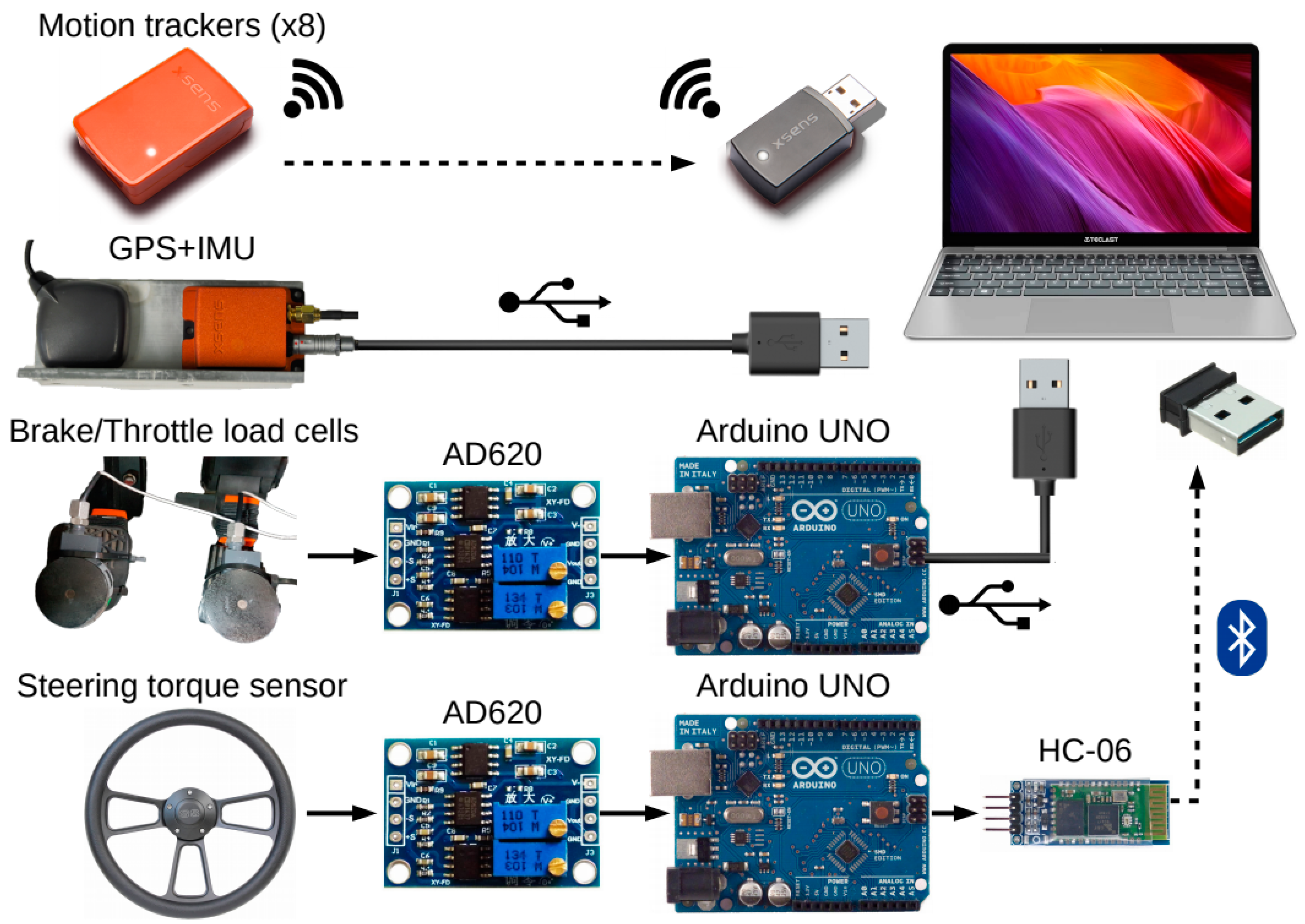
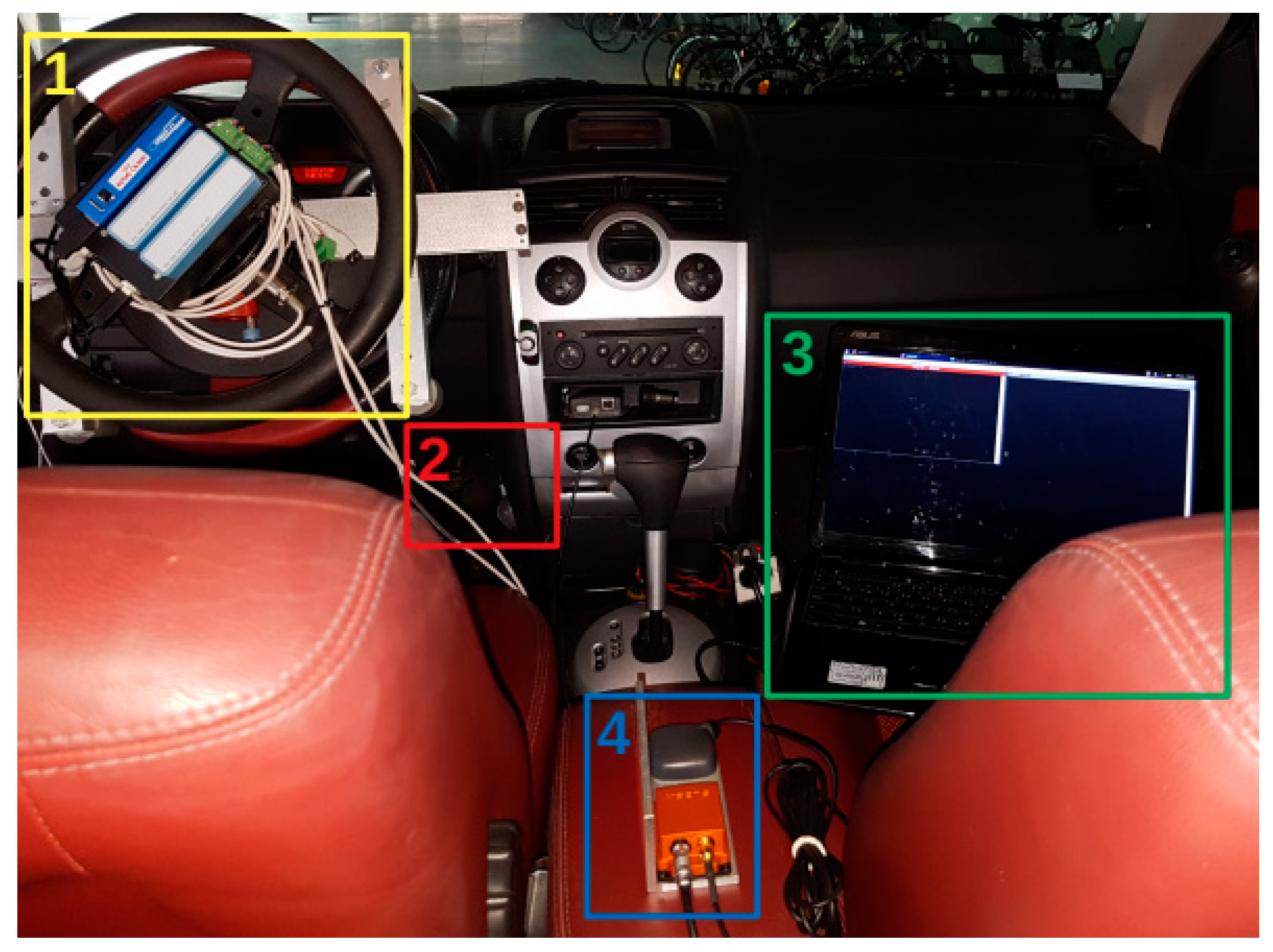
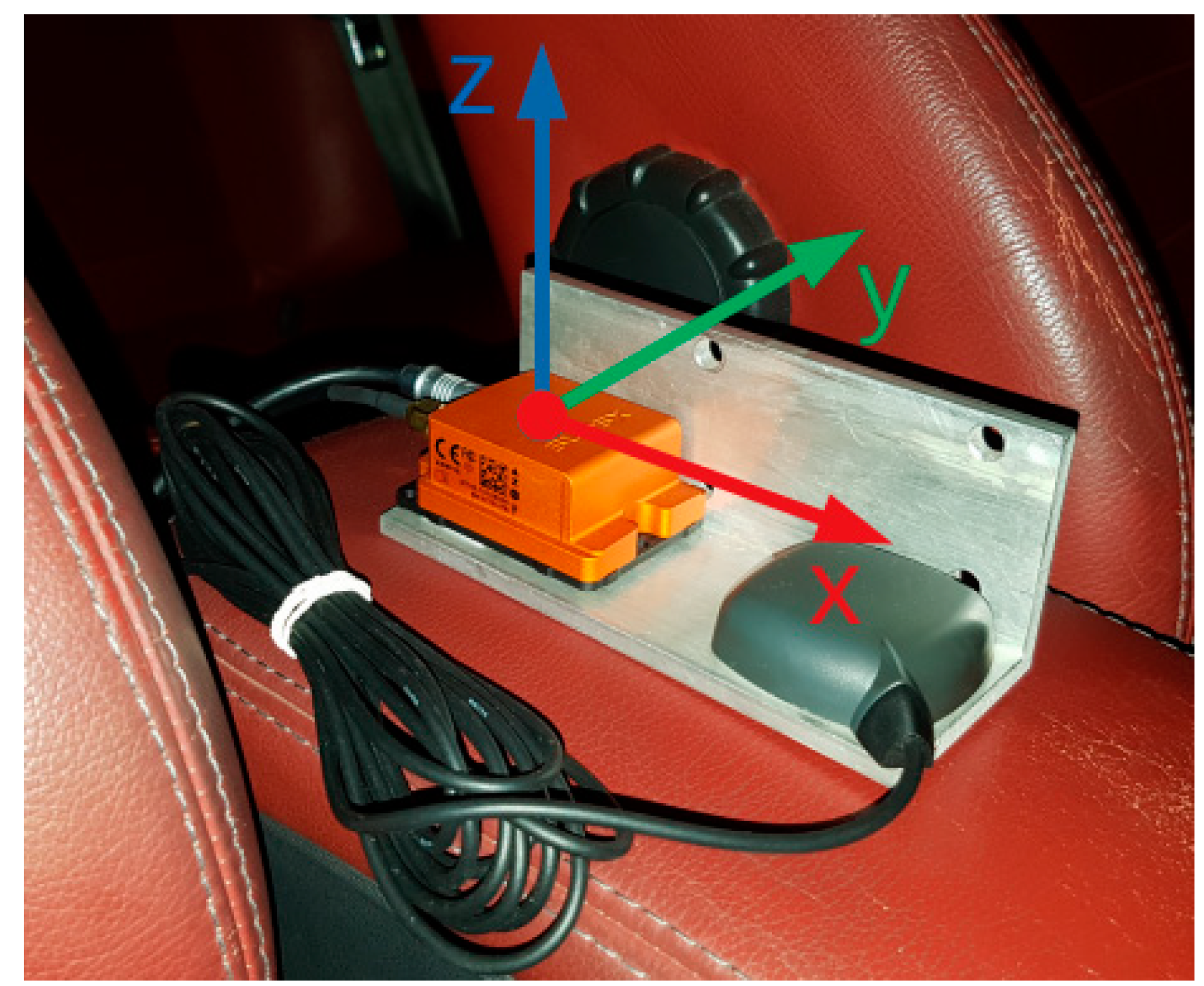
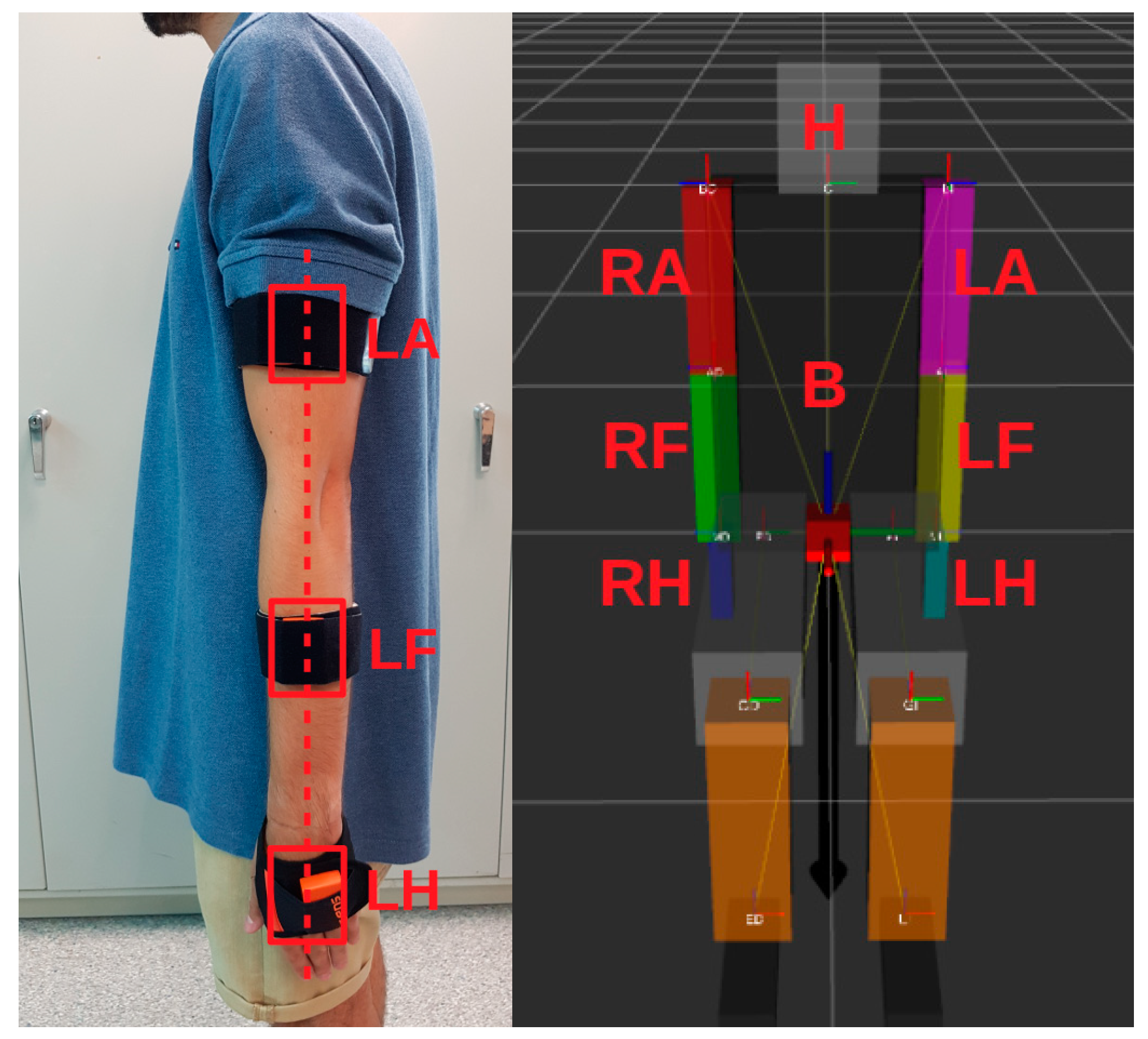
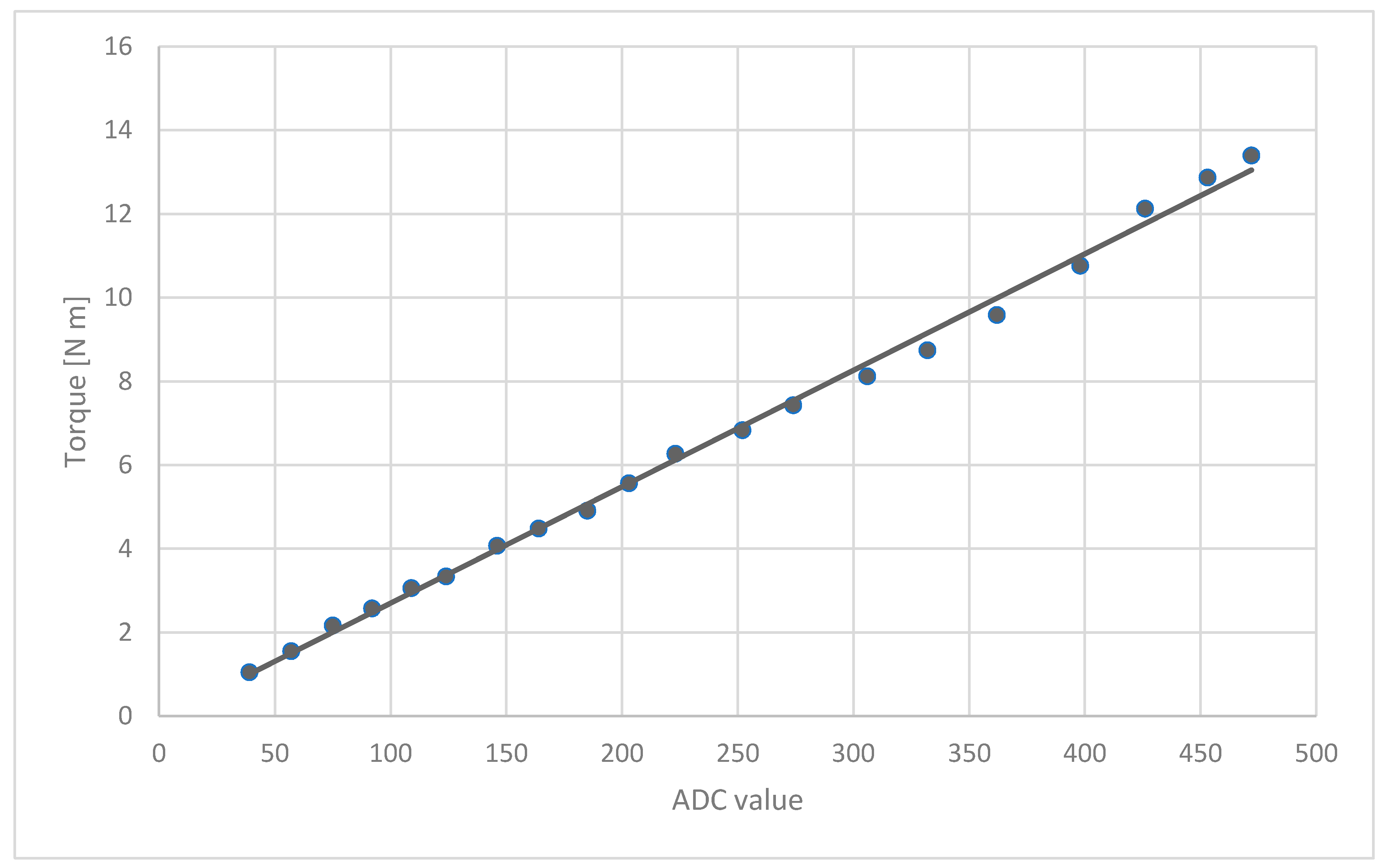


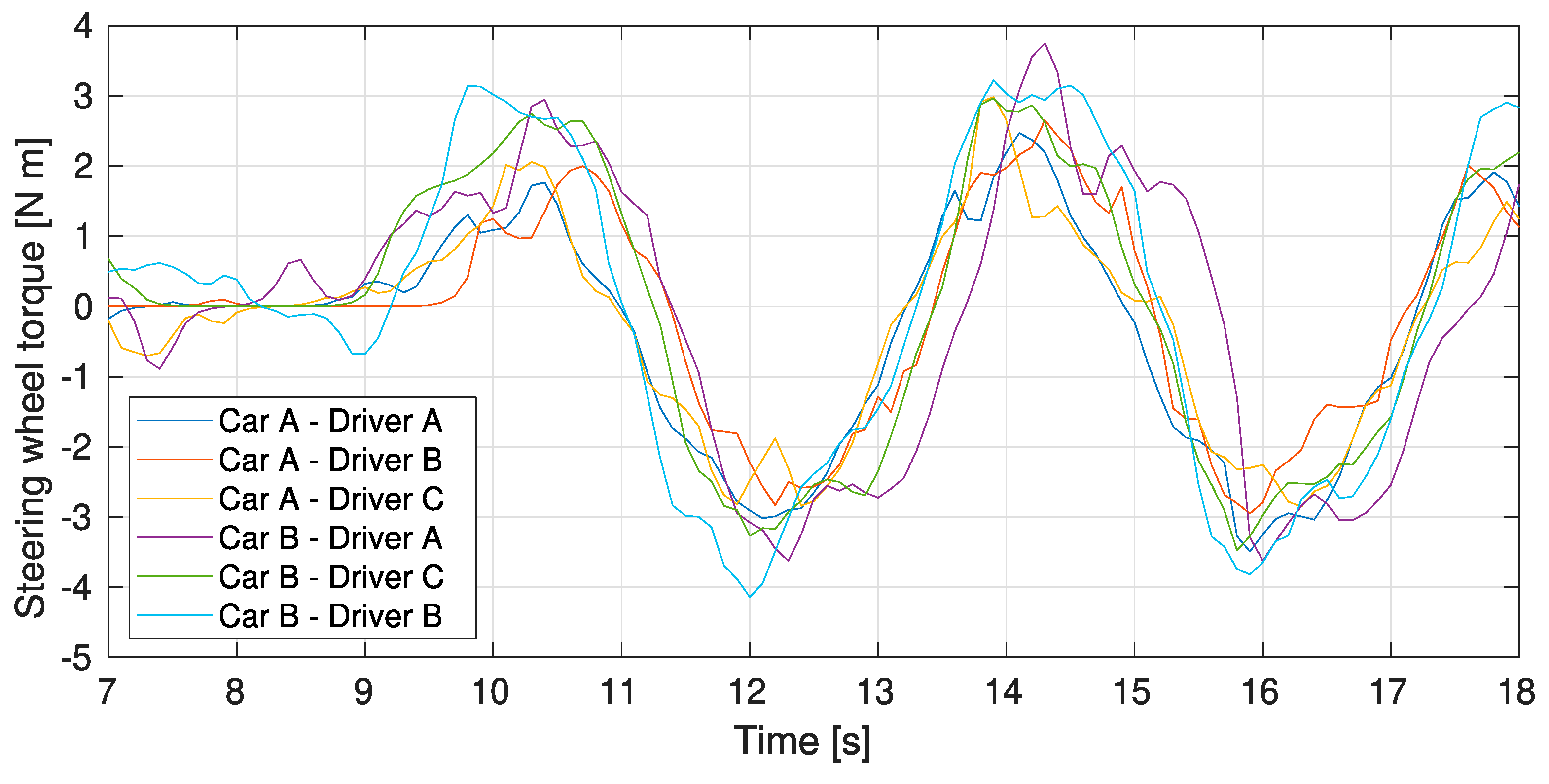
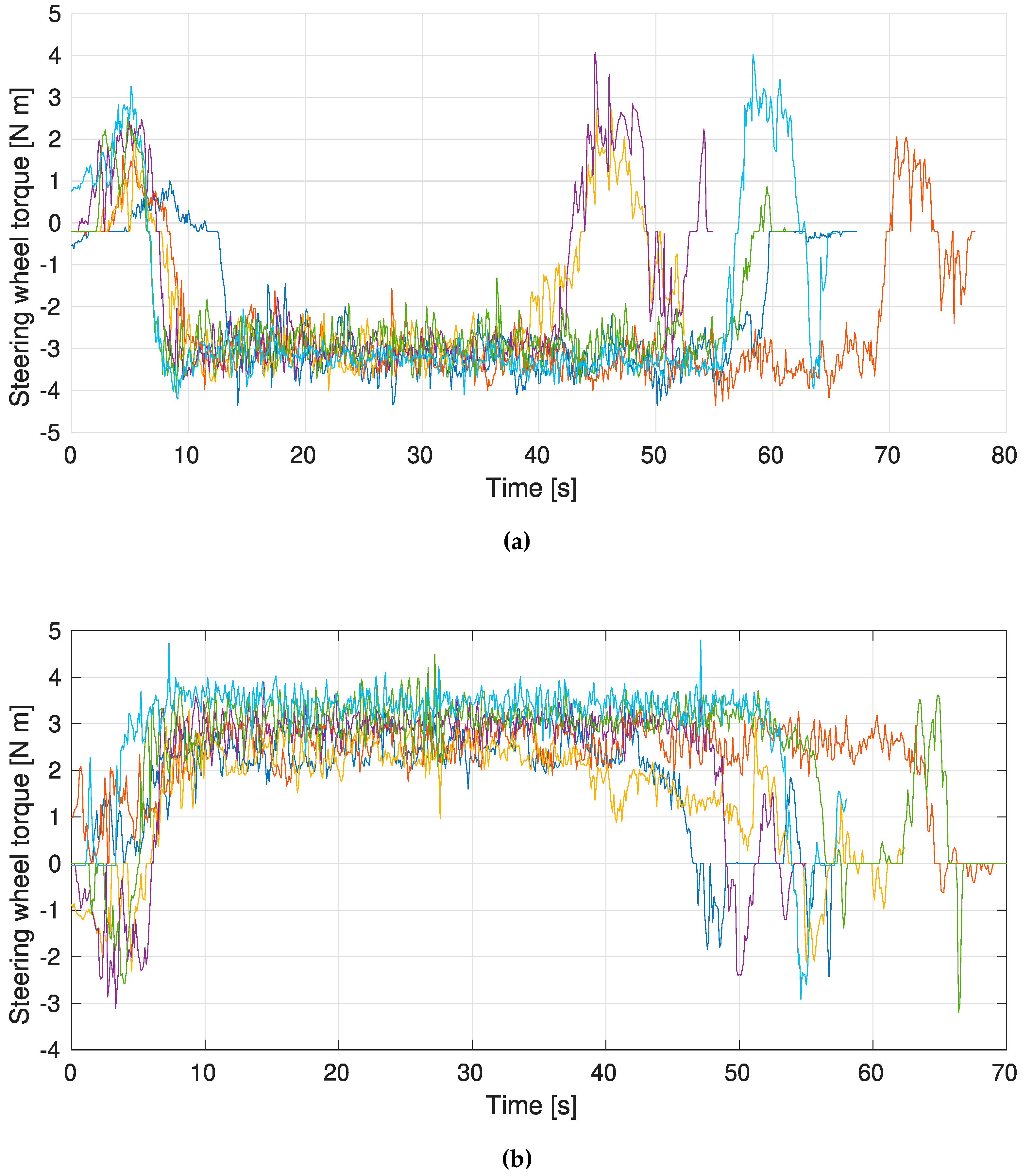
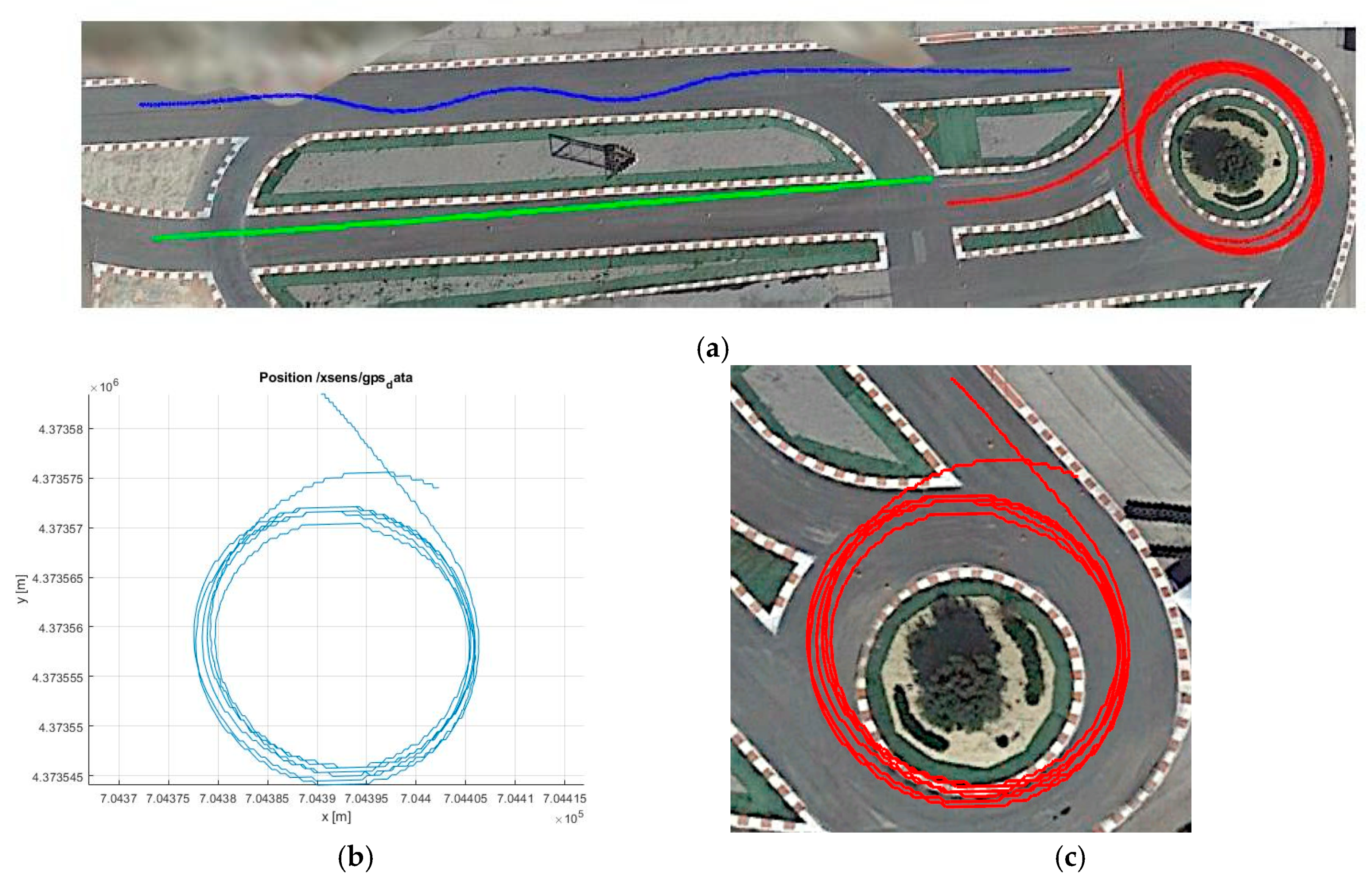
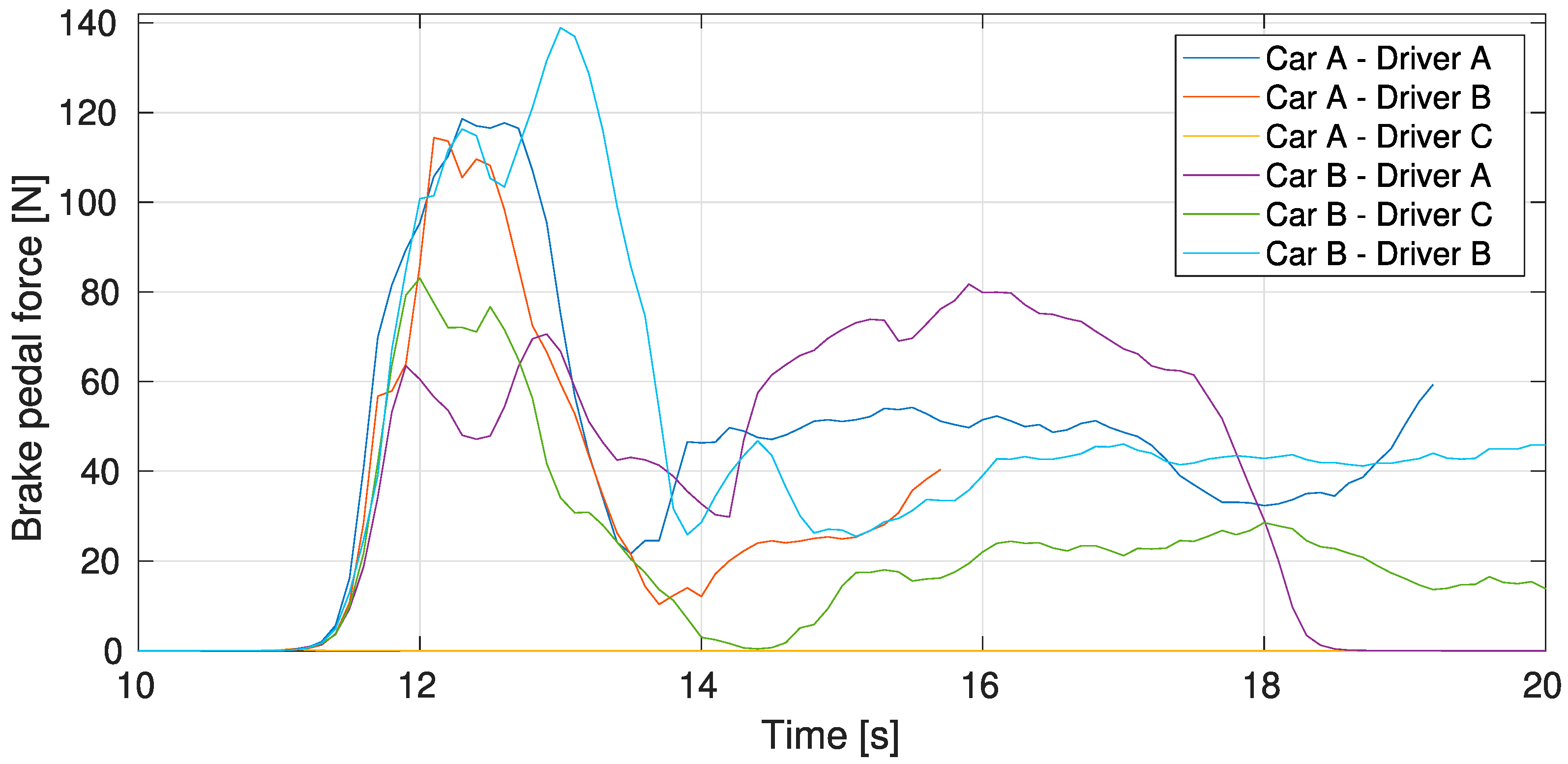
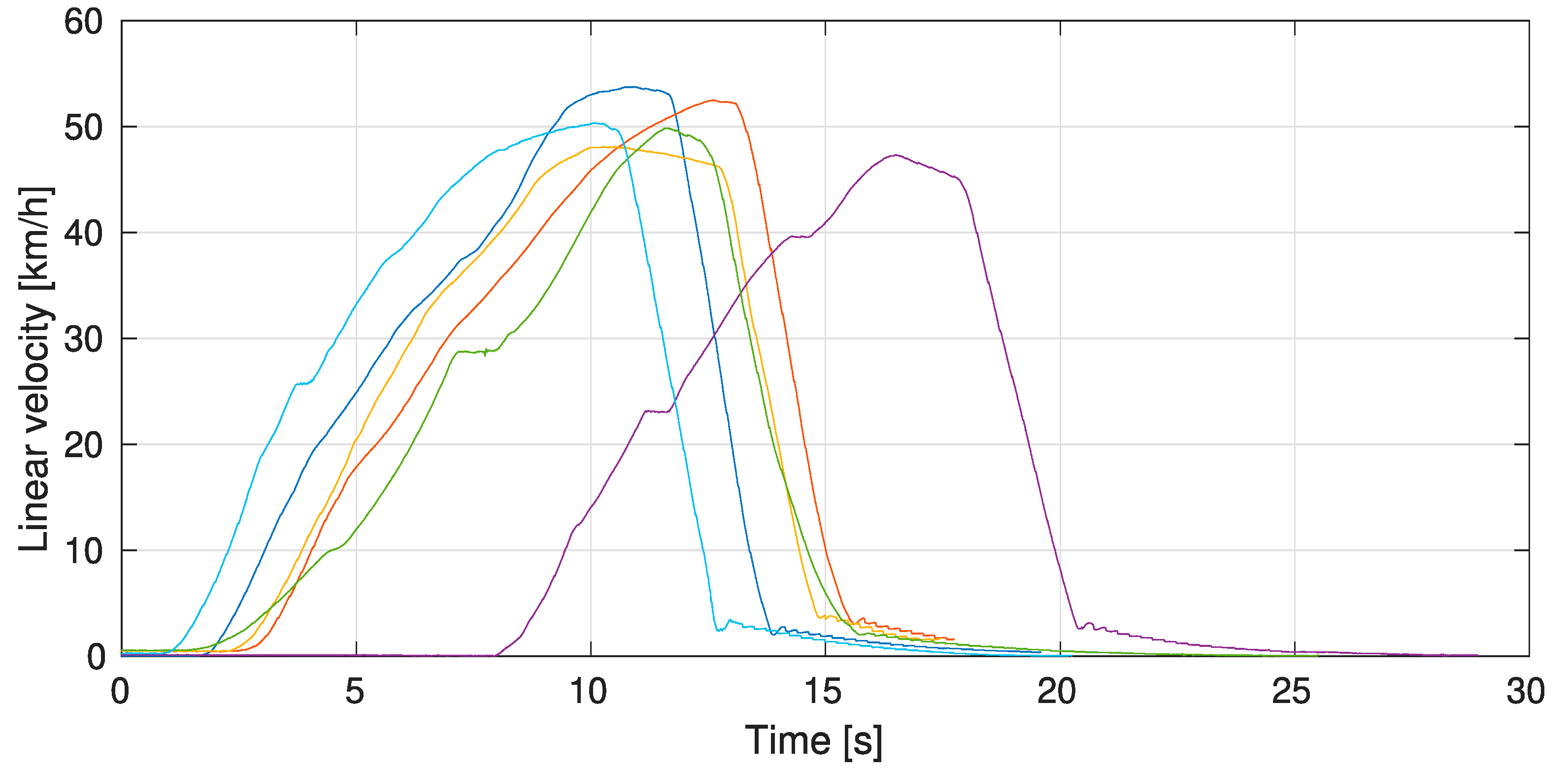

| Vehicle’s Data Sheet | Vehicle 1 | Vehicle 2 |
|---|---|---|
| Manufacturer | Renault | Ford |
| Model | Clio | Focus |
| Year | 2014 | 2010 |
| Fuel | Petrol | Diesel |
| Transmission | Automatic | Manual |
| Engine (cc) | 1197 | 1560 |
| ABS | Yes | Yes |
| Power steering | Yes | Yes |
| Vehicle gross weight (kg) | 1165 | 1277 |
| Power (kW) | 88 | 66 |
© 2020 by the authors. Licensee MDPI, Basel, Switzerland. This article is an open access article distributed under the terms and conditions of the Creative Commons Attribution (CC BY) license (http://creativecommons.org/licenses/by/4.0/).
Share and Cite
Dols, J.F.; Girbés-Juan, V.; Luna, Á.; Catalán, J. Data Acquisition System for the Characterization of Biomechanical and Ergonomic Thresholds in Driving Vehicles. Sustainability 2020, 12, 7013. https://doi.org/10.3390/su12177013
Dols JF, Girbés-Juan V, Luna Á, Catalán J. Data Acquisition System for the Characterization of Biomechanical and Ergonomic Thresholds in Driving Vehicles. Sustainability. 2020; 12(17):7013. https://doi.org/10.3390/su12177013
Chicago/Turabian StyleDols, Juan F., Vicent Girbés-Juan, Álvaro Luna, and Javier Catalán. 2020. "Data Acquisition System for the Characterization of Biomechanical and Ergonomic Thresholds in Driving Vehicles" Sustainability 12, no. 17: 7013. https://doi.org/10.3390/su12177013
APA StyleDols, J. F., Girbés-Juan, V., Luna, Á., & Catalán, J. (2020). Data Acquisition System for the Characterization of Biomechanical and Ergonomic Thresholds in Driving Vehicles. Sustainability, 12(17), 7013. https://doi.org/10.3390/su12177013






